Most beginners who want to build upper body muscle mass or strength can sometimes be intimidated by the incline bench press.
I’m here to tell you this is an all-around great compound exercise for the upper body and can be modified for all fitness levels.
So, let’s get down to business.
In this article, I will give you the guiding principles of a great incline bench press, the most common mistakes people make, and the technical details so you can start bench pressing correctly.
Performing the Incline Bench Press Step-By-Step
Understanding how to safely and effectively perform an exercise is the only thing standing between you and progress.
Below we’ll break down exactly what you need to know so you can master the incline bench press and see results without the unwanted injury.
Proper Incline Bench Press Form
In my experience, the best way to learn the incline bench press exercise is to learn the fundamental mechanics of the movement.
Understanding these core components will help you perfect your incline bench press technique and translate it into a variety of other strength-based exercises.
Below are the key components you’ll need to learn, understand and apply to perform the incline barbell bench press safely (and effectively).
Bench Positioning
Before you even touch the barbell, you must set up the bench you’ll be sitting on in the correct position with the ideal angle.
The back support of your bench should be set to anywhere from a 15º – 45º angle.
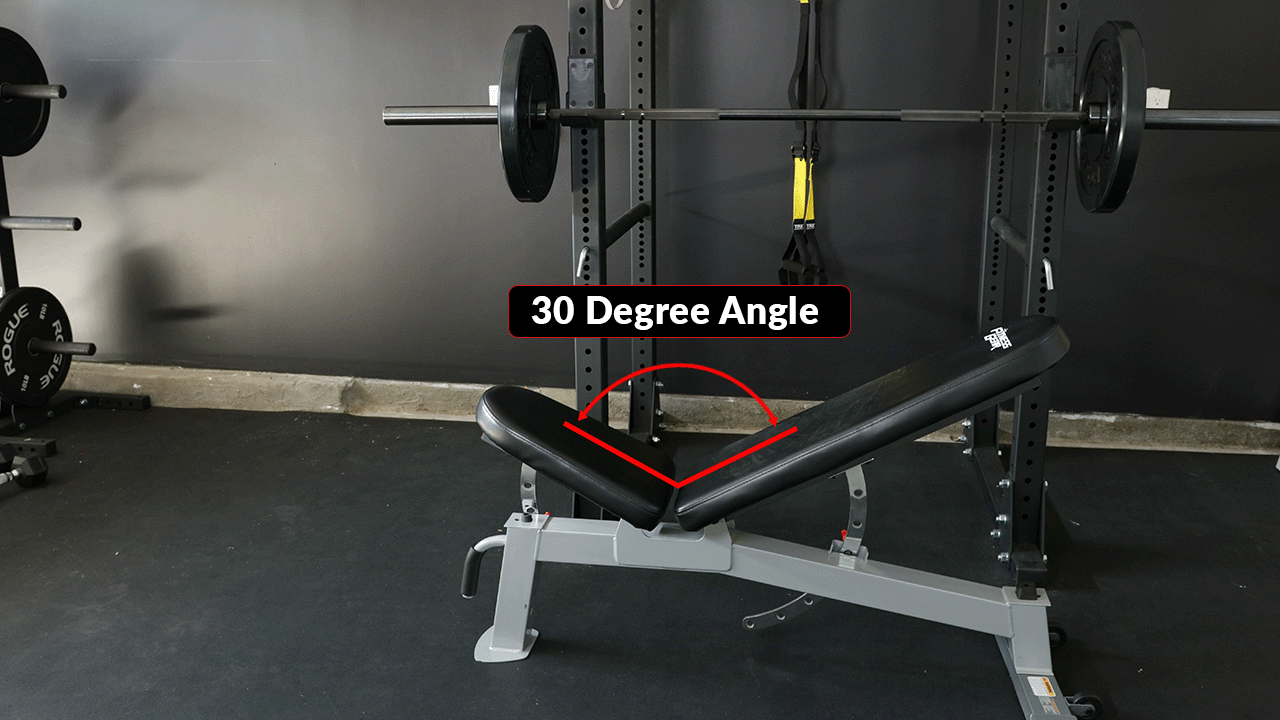
While the seat of the bench should be angled slightly upward to stop you from sliding down and/or forward while performing the exercise.
Coaching Note: A good rule of thumb is to center the bench underneath the barbell so that your eyesight falls in front of the barbell while seated and looking upward.
Grip Width
Choose a grip width that fits your arm’s length to maximize your leverage.
Place your arms at shoulder width on the bar and note the natural resting position.
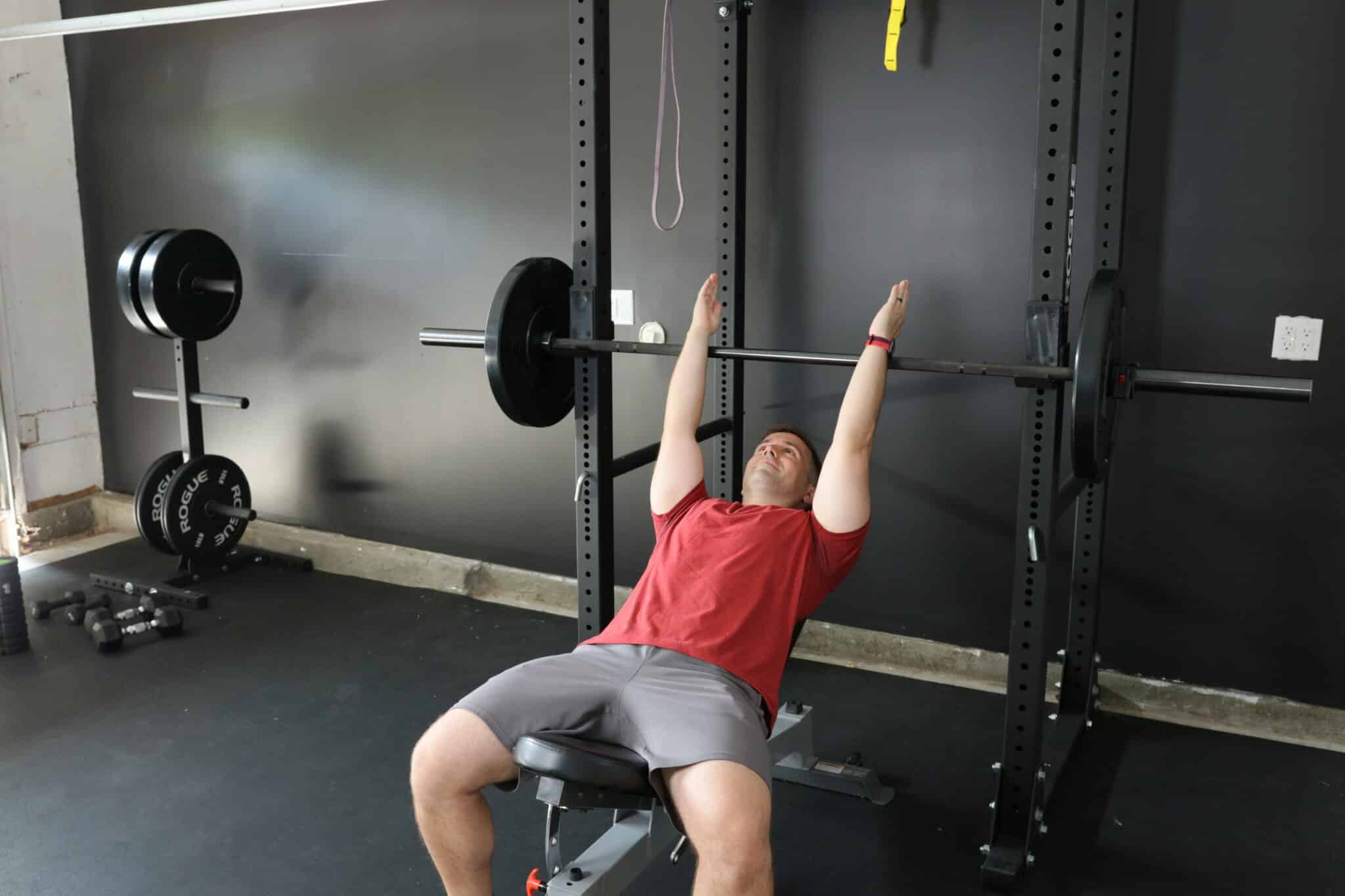
Move your arms slightly wider and grab the bar, ensuring both hands are evenly spaced.
The ideal grip width is about 2x the length of your shoulder span from each clavicle (Src). This will provide comfortable and efficient movement for maximum leverage.
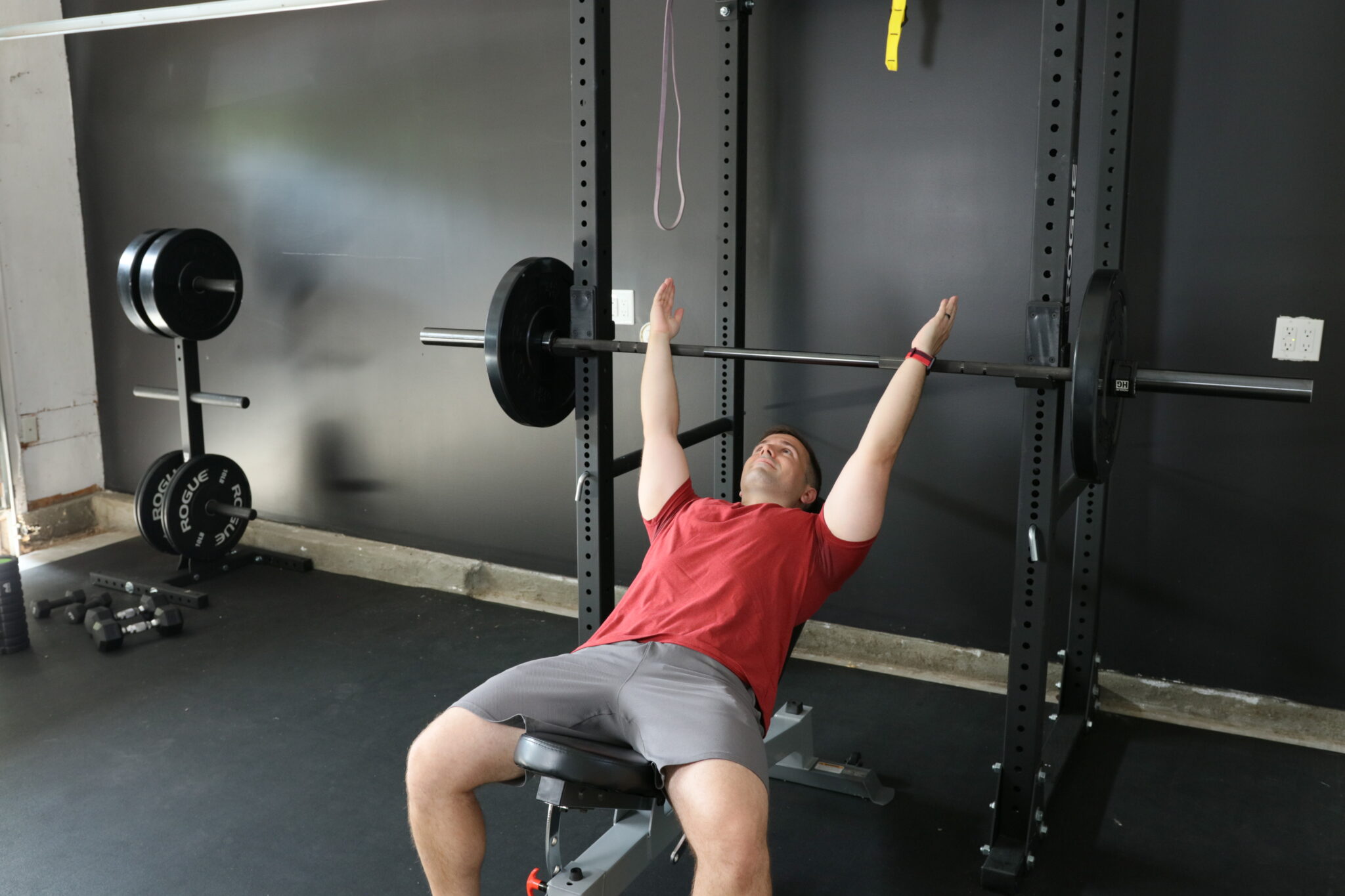
Coaching Note: If you don’t want to break out your measuring tape, a good rule of thumb is to take a grip that is slightly wider than your shoulder width (see image above).
Stabilizing Your Shoulder Blades
When people tell you to “pull your shoulders down and back” during a bench press, they’re referring to scapular retraction. This is simply squeezing your shoulder blades together.
To stabilize your shoulders, follow these two steps:
- Squeeze your shoulder blades together and backward
- Roll your shoulders down towards the ground behind you
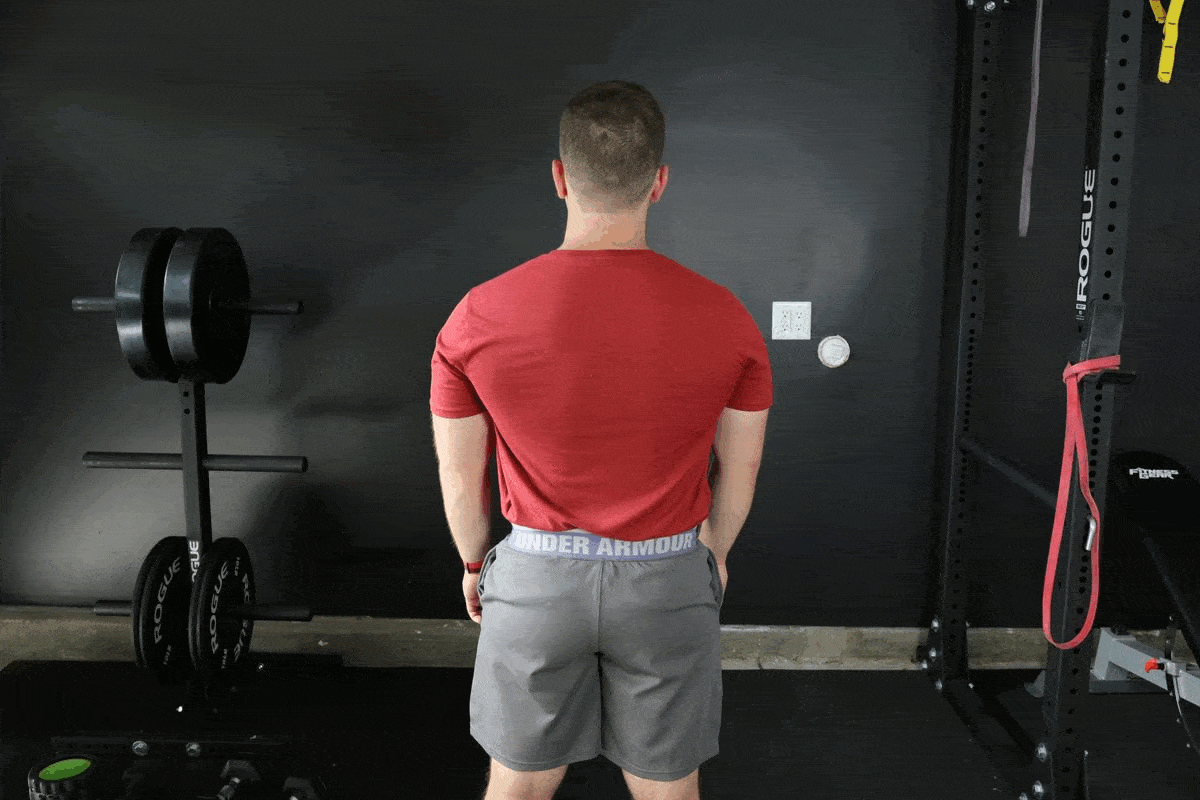
This helps keep the focus of the exercise on your chest muscles and reduces stress on your shoulders. Additionally, it helps stabilize your shoulder joint and prevent injury.
For more information, check out Squat University’s post on shoulder stabilization.
Coaching Note: With your hands at the appropriate grip length, imagine you’re trying to squeeze a pencil between your shoulder blades and hold it in place throughout the entire movement.
Elbow Positioning During Movement
For a 30-degree incline bench press, aim for a natural elbow position, not too flared or too close. Keep your elbows in a middle, neutral position throughout the exercise.
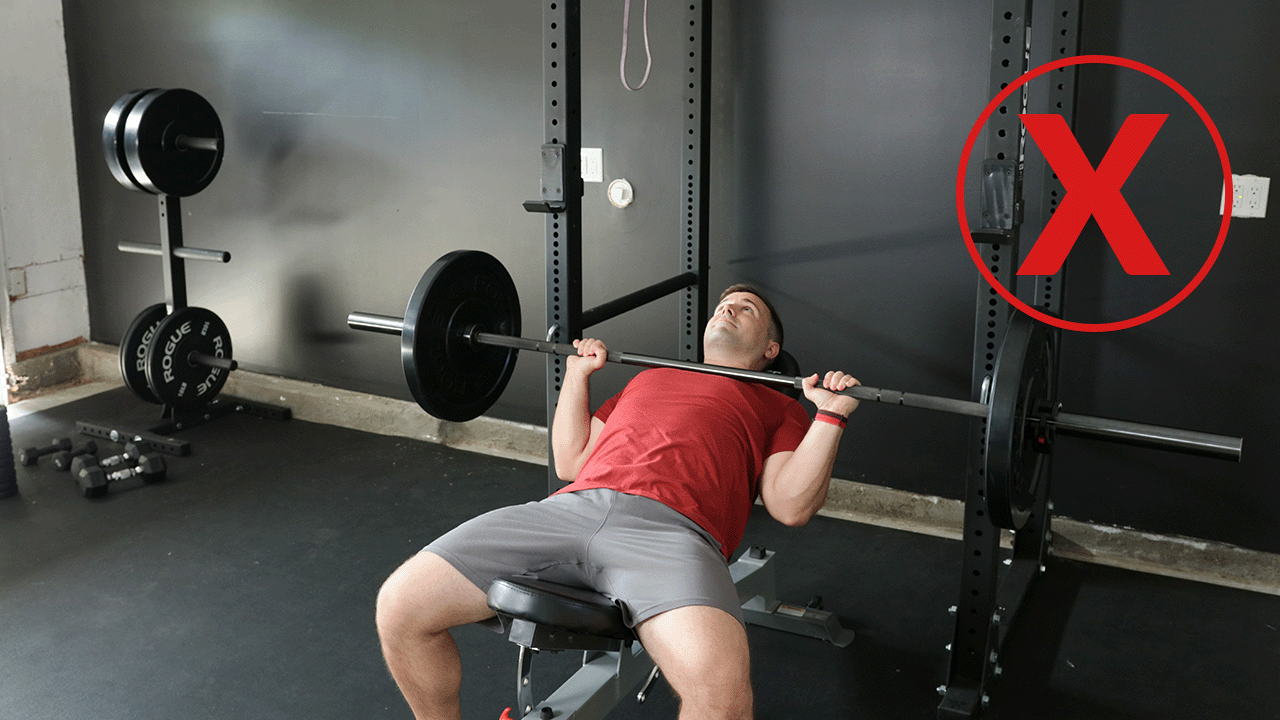
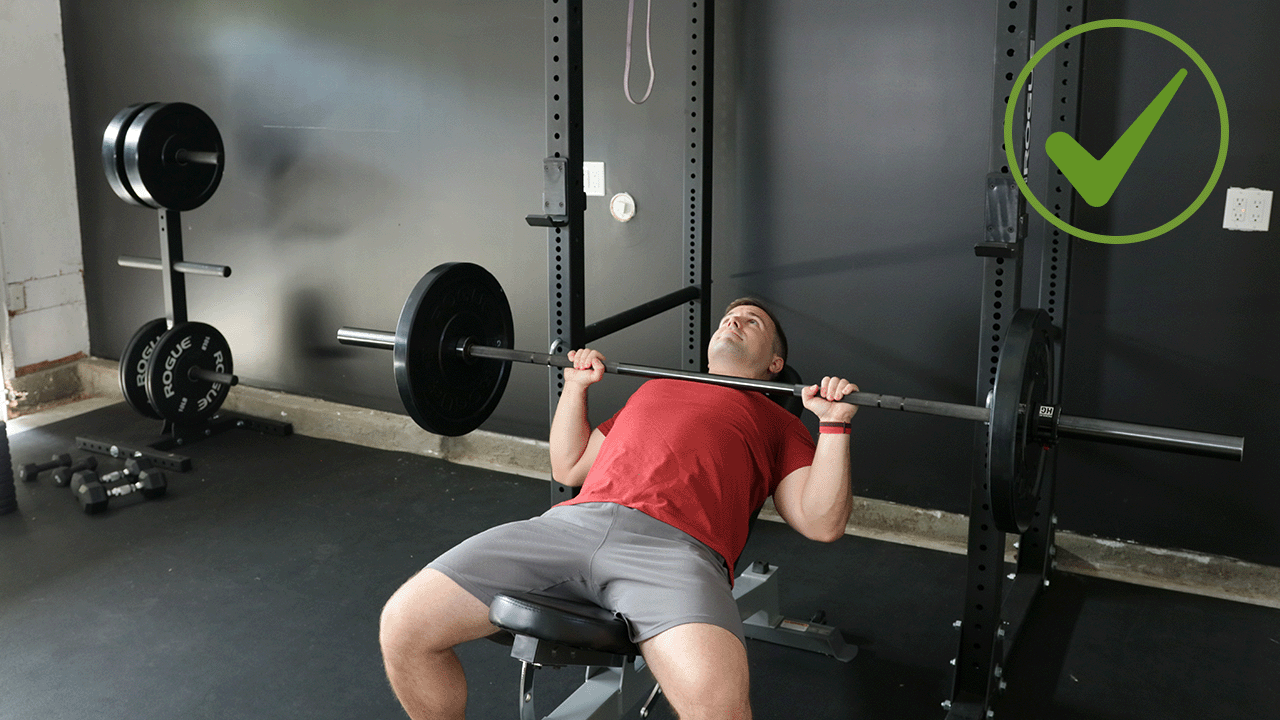
Coaching Note: Your elbows shouldn’t be overly flared out or overly tucked in. Instead, the position of your elbows should feel natural to you while pressing – not exaggerated.
Bracing & Executing the Incline Bench Press
To perform the incline bench press, prepare your core by taking a deep breath and creating internal pressure around your abs.
Unrack the barbell with confidence and perform the exercise with a controlled tempo.
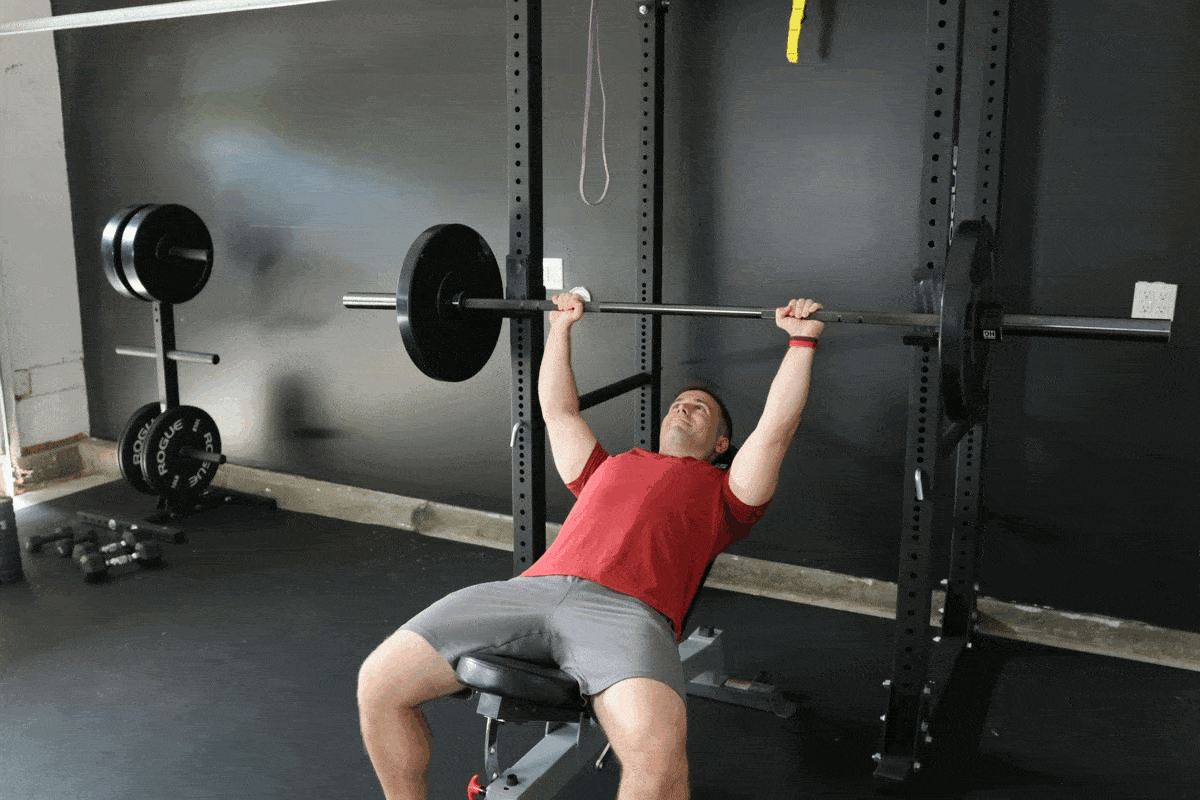
Coaching Note: When you are breathing and bracing your core correctly, you should feel your ribs (not your stomach) expand outwards (laterally) on both sides, creating internal pressure.
Incline Bench Press Muscles Worked & Their Roles
Below is a short breakdown of which muscles are worked during the inclined bench https://strengthdaily.com/barbell-shoulder-press-beginners-guide/press exercise.
Also, I included a reference table to help explain the difference between how certain muscles play a part in the movement of an exercise.
| Prime Mover (Agonist) Muscles | These are the muscles doing the brunt of the work contracting to generate movement for the exercise. |
| Synergist Muscles | The synergist muscles are a group of nearby muscles that assist the prime movers in the execution of an exercise. They do this by helping stabilize the joint around where movement is happening. |
| Antagonist Muscles | The antagonist’s muscles perform the opposite action of the prime mover. (ex: If your bicep (bicep curl prime mover) is actively contracting and shortening then your tricep is relaxing and lengthening.) |
Prime Mover Muscles
- Pectoralis Major/Minor (specifically, the clavicular portion)
- Triceps Brachii
Synergist Muscles
- Deltoids (specifically, the anterior portion)
- Infraspinatus (aka rotator cuff muscle)
- Supraspinatus (aka rotator cuff muscle)
- Subscapularis (aka rotator cuff muscle)
- Teres minor (aka rotator cuff muscle)
- Coracobrachialis
Antagonist Muscles
- Biceps
- Latissimus Dorsi
Benefits of the Incline Bench Press Exercise
The incline bench press exercise has a few notable benefits worth highlighting. Read below so you can see how this exercise has a direct impact on your health & fitness goals.
- Semi-Functional Movement: We constantly lift things away from us and over our heads daily. (Example: picking up a box and storing it in a cabinet at or above eye level.) By developing strength & stability through your shoulders in these different ranges of motion (ROM), you make your everyday tasks easier.
- Targets Multiple Muscle Groups: Compound exercises require more energy and multiple muscles to be recruited for execution. So, if your goal is to A) Be efficient with your workouts and/or B) Increase the size of your shoulders, chest, and triceps, then this exercise can help you accomplish that.
- Develops Upper Body (Push) Strength: This compound exercise helps you get stronger by recruiting multiple muscles & challenging those muscles to work in a less stable ROM. Ultimately, when the incline barbell bench press is done safely and consistently, it leads to increased pressing strength.
Frequently Asked Questions About Incline Bench Press
Here are some of the most common questions answered for you after breaking down the fundamentals of the incline bench press.
Is An Incline Bench Press Better?
The incline bench press is a good exercise for strengthening your upper body and building muscle. However, for best results in building chest muscle, it’s recommended to do a variety of chest exercises including the flat bench press. To help your muscles grow, make sure to eat enough food and protein and keep challenging your muscles by gradually increasing the weight you use.
Why Is the Incline Bench Press Harder?
The incline bench press is more difficult than the flat bench press because it requires the use of more shoulder and tricep muscles. The angle of the incline bench press means that the weight is not directly over your chest but instead centered between your chest and shoulders. This makes the exercise less stable and requires the use of more muscles to complete the lift.
How Inclined Should the Bench Be For An Incline Barbell Press?
When doing an incline barbell press, it’s good to have the bench tilted at a slight angle. Most people start with an angle of 30 degrees, but you can adjust it to your liking. Just remember, the angle should be between 15-45 degrees.

Final Thoughts
The incline bench press is a solid compound lift that can help build muscle across your chest and shoulders (specifically, your anterior deltoids).
If you’re looking to build a bigger, stronger chest, the incline bench press is the compound exercise to help you do that.
Want more workout tips for increasing strength & muscle size? Read This.

